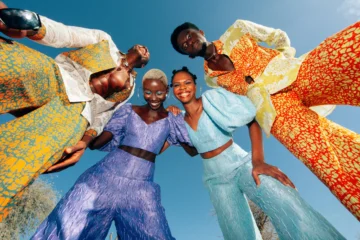Fashion is an ever-evolving tapestry woven from cultural influences, technological advancements, and individual expression. From the opulence of royal courts to the minimalist trends of today, the world of fashion reflects societal values and shifts. In this blog, we’ll explore the key milestones in fashion history, current trends, and the future of style.
A Brief History of Fashion
The Ancient World
Fashion can be traced back to ancient civilizations where clothing was not only a means of protection but also a symbol of status and identity. The Egyptians adorned themselves with linen garments and jewelry, while the Greeks celebrated the human form through draped fabrics. These early styles set the stage for fashion as a form of personal expression.
The Middle Ages to the Renaissance
As we moved into the Middle Ages, fashion became more structured. The use of fabrics such as velvet and brocade, along with intricate embroidery, became popular among the elite. The Renaissance heralded a time of creativity, with fashion reflecting the artistic innovations of the period. Tailoring advanced, leading to garments that highlighted the wearer’s shape.
The 18th and 19th Centuries
The 18th century was marked by extravagance and elaborate silhouettes, with powdered wigs and corseted waists dominating the scene. The Industrial Revolution brought about significant changes; clothing became more accessible due to mass production, allowing a broader range of people to express their style.
The 20th Century: A Time of Revolution
The 20th century witnessed dramatic shifts in fashion. The flapper dresses of the 1920s symbolized liberation, while the post-war era favored more tailored looks. The rise of youth culture in the 1960s introduced bold colors and experimental designs. Designers like Coco Chanel and Christian Dior redefined femininity, creating timeless pieces that remain influential today.
Current Trends in Fashion
Sustainability and Ethical Fashion
In recent years, a growing awareness of environmental issues has reshaped the fashion landscape. Sustainable and ethical fashion is no longer a niche market; it’s a movement. Brands are now prioritizing eco-friendly materials, ethical labor practices, and transparency in their supply chains. Consumers are becoming more conscious of their choices, seeking quality over quantity.
The Rise of Digital Fashion
Technology has transformed the way we experience fashion. Virtual reality, augmented reality, and AI are becoming integral to fashion design and retail. Digital fashion shows and online shopping have democratized access to style, allowing consumers to explore trends without geographic limitations. Additionally, the rise of NFTs in fashion is pushing the boundaries of ownership and creativity.
Inclusivity and Diversity
The fashion industry is increasingly embracing diversity in body types, ethnicities, and gender identities. Campaigns and runway shows now feature a broader range of models, reflecting the rich tapestry of human experience. Brands that prioritize inclusivity resonate more with consumers, fostering a sense of community and connection.
The Future of Fashion
As we look ahead, the future of fashion seems poised for further transformation. The fusion of technology and creativity will likely lead to innovative designs and experiences. Brands that prioritize sustainability and inclusivity will continue to thrive, shaping a more responsible fashion ecosystem.
Moreover, the resurgence of vintage and thrift shopping signals a shift toward a more circular economy, where consumers value uniqueness and heritage. Fashion will increasingly reflect personal stories and sustainable practices, allowing individuals to express their identity while caring for the planet.
Conclusion
Fashion is a dynamic reflection of our world, embodying cultural shifts and personal narratives. As we navigate the complexities of modern life, the industry continues to adapt, innovate, and inspire. By understanding the past and embracing the future, we can celebrate fashion as a powerful form of expression that connects us all.
Whether you’re a trendsetter or a classicist, remember that fashion is not just about clothing—it’s about telling your story. Embrace your style, celebrate diversity, and contribute to a more sustainable future in fashion.




